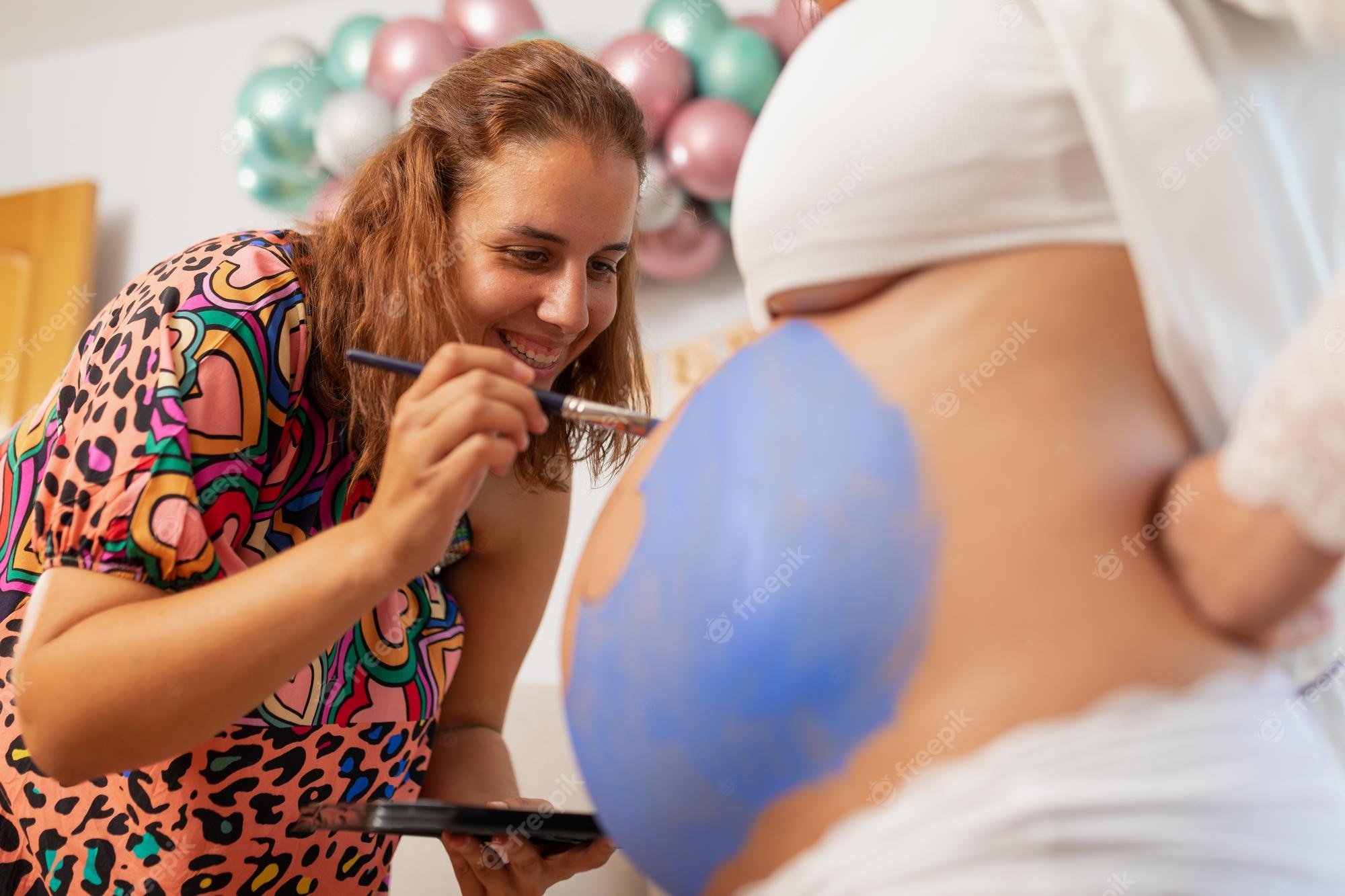
Contents
- 1 Introduction
- 2 1. The History and Significance of Belly Painting
- 3 2. The Emotional and Therapeutic Benefits
- 4 3. Finding the Right Artist
- 5 4. Preparing for the Belly Painting Session
- 6 5. Choosing the Design and Theme
- 7 6. The Painting Process
- 8 7. Capturing the Moment
- 9 8. Showcasing the Artwork
- 10 9. Safety Measures and Materials
- 11 10. Belly Painting as a Bonding Activity
- 12 11. Embracing the Imperfections
- 13 12. Removing the Belly Paint
- 14 13. The Joy of Sharing
- 15 14. Celebrating Milestones
- 16 15. Conclusion
- 17 FAQs
Introduction
Pregnancy is a beautiful and transformative journey for expectant mothers. It is a time filled with excitement, anticipation, and a whole range of emotions. One creative and delightful way some women choose to celebrate this miraculous phase is through belly painting. Belly painting is an ancient art form that has gained popularity in recent years, allowing pregnant women to express their unique experiences and emotions on their growing bellies. In this article, we will explore the beauty and significance of belly painting during pregnancy, its benefits, tips for a successful painting session, and the safe materials to use.
1. The History and Significance of Belly Painting
Belly painting is not a new concept; it has been a part of various cultures for centuries. From ancient Egypt to indigenous tribes, decorating the pregnant belly has held spiritual and cultural significance. The act of adorning the belly with vibrant colors and symbols is believed to bring protection, good luck, and blessings to both the mother and the unborn child.
2. The Emotional and Therapeutic Benefits
Belly painting offers more than just a creative outlet. It can be an emotional and therapeutic experience for the expectant mother. The process of connecting with the baby while creating art on the belly can strengthen the bond between the mother and her unborn child. It also provides a sense of empowerment, allowing the mother to celebrate her changing body and embrace her pregnancy journey.
3. Finding the Right Artist
Choosing the right artist for belly painting is crucial. Look for a skilled and experienced artist who specializes in pregnancy belly art. Check their portfolio to ensure their style aligns with your vision. Communication is key; discuss your ideas, preferences, and any specific symbols or themes you’d like to incorporate into the design.
4. Preparing for the Belly Painting Session
Before the belly painting session, make sure your belly is clean and free from any lotions or oils. Wear comfortable clothing that can be easily adjusted during the painting process. It’s essential to create a relaxing environment, so consider playing soothing music and having a supportive partner or friend present.
5. Choosing the Design and Theme
The design and theme of the belly painting can be personalized according to the mother’s preferences. Some opt for nature-inspired designs like blooming flowers, while others embrace whimsical themes like fairy tales. The design can also reflect the baby’s gender if known, incorporating elements such as baby animals or gender-specific colors.
6. The Painting Process
During the painting session, the expectant mother can sit or lie down comfortably. The artist will use non-toxic, water-based paints that are safe for both the mother and the baby. The process is gentle and should not cause any discomfort. Feel free to take breaks if needed or change positions for the artist’s convenience.
7. Capturing the Moment
Belly painting is a memorable experience, and having it captured in photographs can preserve the beauty of the artwork and the emotions behind it. Consider hiring a professional photographer or having a loved one take pictures to cherish this precious moment forever.
8. Showcasing the Artwork
Many mothers choose to showcase their belly painting artwork, either through social media or by creating prints for personal keepsakes. The positive response from friends, family, and the online community can be heartwarming and encouraging.
9. Safety Measures and Materials
Safety is of utmost importance during belly painting. Always ensure that the artist uses hypoallergenic, non-toxic paints and follows strict hygiene practices. If you have any allergies or skin sensitivities, communicate them beforehand. In case of any irritation or adverse reactions, consult a healthcare professional immediately.
10. Belly Painting as a Bonding Activity
Belly painting can be a wonderful bonding activity for couples. Partners can actively participate in the painting process, adding their own artistic touch to the belly. It’s an opportunity for shared creativity and a beautiful way to connect with the baby as a family.
11. Embracing the Imperfections
Every belly painting design is unique, just like every pregnancy journey. Embrace the imperfections and variations in the artwork. Remember that the purpose is not to achieve perfection but to celebrate the joy and beauty of pregnancy.
12. Removing the Belly Paint
Removing the belly paint is a simple process. Use a soft, damp cloth or baby wipes to gently wipe away the paint. Avoid scrubbing or using harsh chemicals that could irritate the skin.
13. The Joy of Sharing
Sharing your belly painting experience with other expectant mothers can be inspiring and uplifting. Join online communities or attend local events where women come together to celebrate pregnancy through art.
14. Celebrating Milestones
Belly painting can be done at various stages of pregnancy to mark significant milestones, such as the first kick or the third trimester. Each painting can tell a different story and capture the emotions experienced during that particular phase.
15. Conclusion
Belly painting during pregnancy is a creative and joyful expression of the miraculous journey of motherhood. It allows expectant mothers to celebrate their bodies, embrace the changes, and bond with their unborn child. The experience can be emotionally fulfilling and therapeutic, leaving behind cherished memories that will be treasured for a lifetime.
FAQs
1. Is belly painting safe during pregnancy?
Belly painting is generally safe when done using non-toxic and hypoallergenic paints. However, it’s essential to ensure the artist follows strict hygiene practices and uses safe materials.
2. Can I choose any design for belly painting?
Absolutely! The design and theme of the belly painting can be entirely personalized according to your preferences and ideas.
3. When is the best time to have a belly painting session?
You can have a belly painting session at any stage of your pregnancy. Some women choose to do it during the third trimester to capture the fullness of their bellies.
4. How long does a belly painting session take?
The duration of a belly painting session can vary depending on the complexity of the design, but it typically takes around one to two hours.
5. Can I remove the belly paint easily?
Yes, removing the belly paint is a simple process that can be done using a soft, damp cloth or baby wipes.




